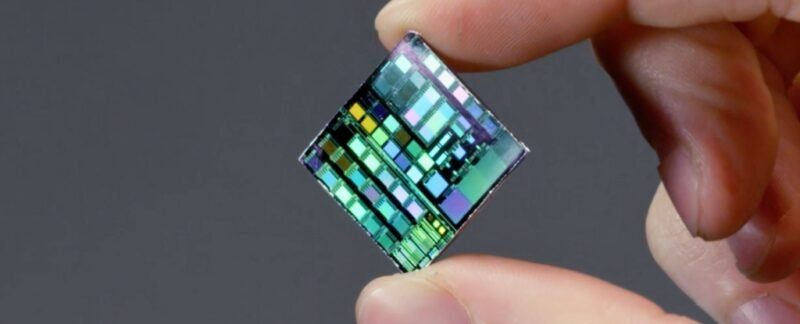Quick Takeaways
-
Introduction of 2nm Technology: On April 1, 2025, TSMC launched the world’s most advanced 2nm microchip, set to revolutionize performance and efficiency in various electronic devices.
-
Enhanced Performance and Efficiency: The 2nm chips promise a 10%-15% increase in computing speed or a 20-30% reduction in power usage compared to the previous 3nm technology, with 15% greater transistor density.
-
Economic and Security Significance: Taiwan’s microchip industry, particularly TSMC, is crucial to national security, often referred to as the "silicon shield," prompting significant investments and international defense concerns.
- Challenges Ahead: Despite promising advancements for AI and energy sustainability, manufacturing the 2nm chips poses challenges related to complexity, heat management, and potential material limits.
The World’s Most Advanced Microchip Unveiled by TSMC
On April 1, 2025, TSMC, a leading Taiwanese manufacturer, unveiled its 2 nanometre (2nm) microchip. This cutting-edge technology marks a significant leap in performance and efficiency. Mass production is set to begin in the second half of the year, and experts believe it could transform the technology landscape.
Microchips serve as the backbone of modern devices. They reside in smartphones, laptops, and even electric toothbrushes. By layering and etching materials like silicon, manufacturers create microscopic circuits filled with billions of transistors. Transistors act as tiny switches that control electrical flow. Generally, chips with more transistors offer enhanced speed and power.
Advancements in microchip technology continually aim to pack more transistors into smaller spaces. TSMC’s 2nm chips promise improvements over the previous 3nm generation. Notably, users may see a 10%-15% increase in computing speed at the same power level. Alternatively, the chips could achieve a 20-30% reduction in power usage while maintaining speed.
Furthermore, the transistor density of 2nm chips increases by approximately 15% compared to 3nm technology. As a result, devices will likely operate faster, consume less energy, and handle more complex tasks efficiently.
Taiwan has positioned itself as a formidable player in the global microchip industry, often referred to as the "silicon shield." This term underscores its strategic importance—its chip manufacturing capabilities incentivize the U.S. and allies to support Taiwan’s security. Recently, TSMC signed a groundbreaking $100 billion deal to establish five factories in the U.S. Nonetheless, concerns linger about the feasibility of producing 2nm chips outside of Taiwan.
Founded in 1987, TSMC dominates the global "foundry" market, processing chips for major companies worldwide. It manufactures key components like Apple’s A-series processors, NVidia’s GPUs, and Qualcomm’s Snapdragon chips. Each collaboration illustrates the widespread impact of TSMC’s microchips on various technologies.
As the industry shifted to 5nm and then 3nm processes, TSMC paved the way for enhanced performance and energy efficiency. For example, upcoming smartphones and laptops with 2nm chips could offer better performance and extended battery life, leading to lighter devices without sacrificing power.
Enhanced speed and efficiency will also benefit AI applications, improving voice assistants, real-time translation, and autonomous systems. Data centers might see reduced energy consumption, aligning with environmental sustainability goals.
However, the introduction of 2nm chips is not without challenges. Manufacturing demands advanced techniques like extreme ultraviolet (EUV) lithography, which increases production costs. Additionally, heat management presents an ongoing issue. As chips become smaller, controlling heat dissipation becomes essential to prevent performance decline.
Despite these challenges, the potential of 2nm chips remains enticing. They may unlock new frontiers in consumer and industrial computing, leading to powerful yet compact devices. As the technology matures, users can anticipate innovations that merge performance, efficiency, and environmental responsibility in upcoming technologies.
Continue Your Tech Journey
Explore the future of technology with our detailed insights on Artificial Intelligence.
Explore past and present digital transformations on the Internet Archive.
QuantumV1

